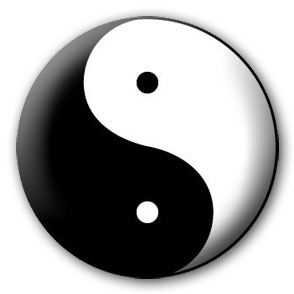 Most people that are familiar with yoga, are familiar with yang yoga, as this tends to be more common in North America. Yang yoga stimulates the muscles in the body, encouraging strength and great physical health.
Most people that are familiar with yoga, are familiar with yang yoga, as this tends to be more common in North America. Yang yoga stimulates the muscles in the body, encouraging strength and great physical health.
The difference
Yin yoga is a less-popular form of yoga practice. The focus of Ying yoga is to stretch the connective tissues of the body. The primary area of focus is the connective tissues of the hips, thighs and lower spinal area. These types of tissues do not stretch the muscles (as in the yang form of yoga) but they stretch and exercise the bone and joints areas of the body.
In order to stretch the connective tissues the overlying muscles must be relaxed. If the muscles are tense, the connective tissue won’t receive the proper stress. You can demonstrate this by gently pulling on your right middle finger, first with your right hand tensed and then with the hand relaxed. When the hand is relaxed, you will feel a stretch in the joint where the finger joins the palm; the connective tissue that knits the bones together is stretching. When the hand is tensed, there will be little or no movement across this joint, but you will feel the muscles straining against the pull.
Yin yoga targets connective tissue, specifically ligaments and tendons in the joints and spine. Over time, practice of yin yoga can lengthen these tissues, increasing range of motion. The muscles account for about forty percent of the resistance against the body’s flexibility, while the connective tissue accounts for about fifty percent. The intensity and physical benefits of the practice depend on two variables, duration of the pose and the temperature of the muscle.
Duration of the Pose
In order to lengthen the connective tissue, you hold a yoga pose, engaging in static stretching. This applies stress, in the form of tension, to the muscle and connective tissue in the targeted region. The muscle, more elastic than the connective tissue, responds immediately, lengthening to its limit. When the muscle is fully stretched, the stress reaches the connective tissue, which is not elastic and does not immediately lengthen. In order to affect the connective tissue, stress must be applied for several minutes at a time. In yin yoga, poses are usually held for three to five minutes, but can be held for as long as twenty minutes. Because of the long duration of poses, one of the key values cultivated in the practice of yin yoga is patience.
Temperature of the muscle
If the muscles are cold, they will be less elastic, and more stress will be transferred to the connective tissue. Yin yoga can be practiced earlier in the day, before physical activity that warms the muscles and increases their elasticity or it can be practiced after a strenuous day and this has been found to be psychologically soothing.
They complement each other
Complementing your regular yang practice with a yin practice will give you the benefit of both approaches. Long strong muscles and strong joints. Yin yoga is a perfect match for yang yoga, and provides a deeper stretch. Although yin yoga is not as intense as other yang forms of yoga, the long duration that a posture is held can be difficult to maintain.



